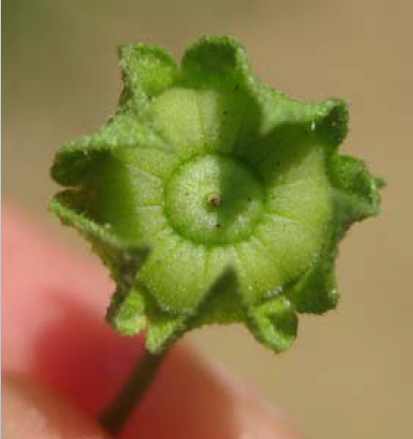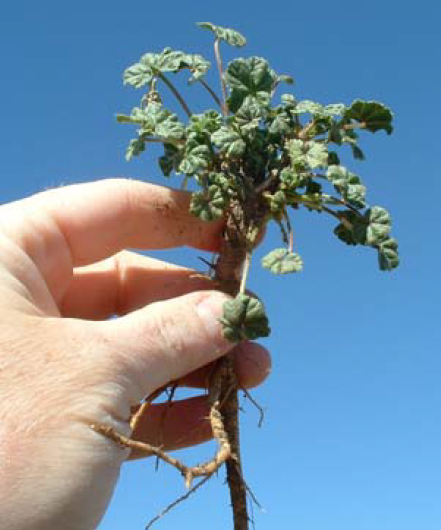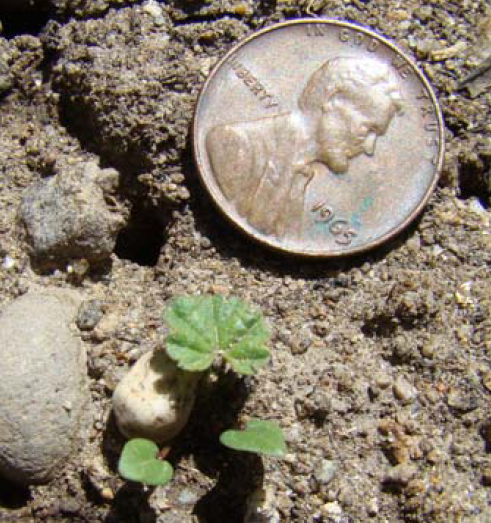Other common names
Mallow, little mallow, cheeseweed, buttonweed
Scientific name
Malva neglecta
Family
Malvaceae
Description
Mallow grows in a rounded, bushy or spreading plant with tough stems and a deep taproot.

Typical plant growing in a lawn. Photo by S. Donaldson.
Leaves
Hairy geranium‐shaped leaves attach to the stem with a petiole (stalk). Leaves have 5 to 7 shallow lobes with round teeth and veins that radiate out from the base.
Flowers
Small (about 2/5 of an inch in diameter), white to pale pink or lavender‐striped and not very noticeable. Flowers have 5 petals with crinkly edges. Blooms from summer to fall.

The flower is small and has five petals. Photo by S. Donaldson.
Fruit
Looks like a miniature cheese wheel with wedge-shaped sections.

The fruit looks like a wrapped wheel of cheese. Photo by S. Donaldson.
Roots
Grows a large, tough taproot.

The young plant has a well-developed taproot. Photo by S. Donaldson.
Native to
Europe
Where it grows
Lawns, gardens, parks, roadsides, pastures and other disturbed or unmanaged sites
Life cycle
Winter annual (sprouts in the fall to early winter) to short‐lived perennial (grows back each year from the roots)
Reproduction
Reproduces by seed

The second set of seedling leaves have the characteristic geranium shape. Photo by W. Hanson Mazet.
Control methods
Common mallow is best controlled when young. Mature plants are difficult to remove mechanically due to the large taproot.
Mechanical
Dig, hoe or pull young plants. Plants that are mowed or break off at the crown will regrow. The tough taproot makes pulling mature plants difficult, if not impossible.
Cultural
Thick mulches can help prevent seed germination. Plant desirable vegetation that will shade the area and reduce germination and growth of young plants. Keep turf healthy and vigorous to compete with the weed.
Biological
None commercially available. Mallow may concentrate nitrates to levels that can be toxic to cattle.
Chemical
Try broadleaf‐selective herbicides on very young plants. Pre‐emergence herbicides can be used to manage existing seed banks. Glyphosate is generally not effective on this plant.
References
- DiTomaso, J.M. and E.A. Healy. 2007. Weeds of California and Other Western States. University of California Publication 3488.
- Whitson, Tom D. (editor). 2002. Weeds of the West. University of Wyoming, Jackson, Wyoming.
- Wilen, A. 2007. Mallows. UC Davis ANR Publication #74127, IPM.
- Wilen, C.A. 2009. Common Mallow. Center for Invasive Species and Ecosystem Health, University of Georgia, Bugwood Wiki.


